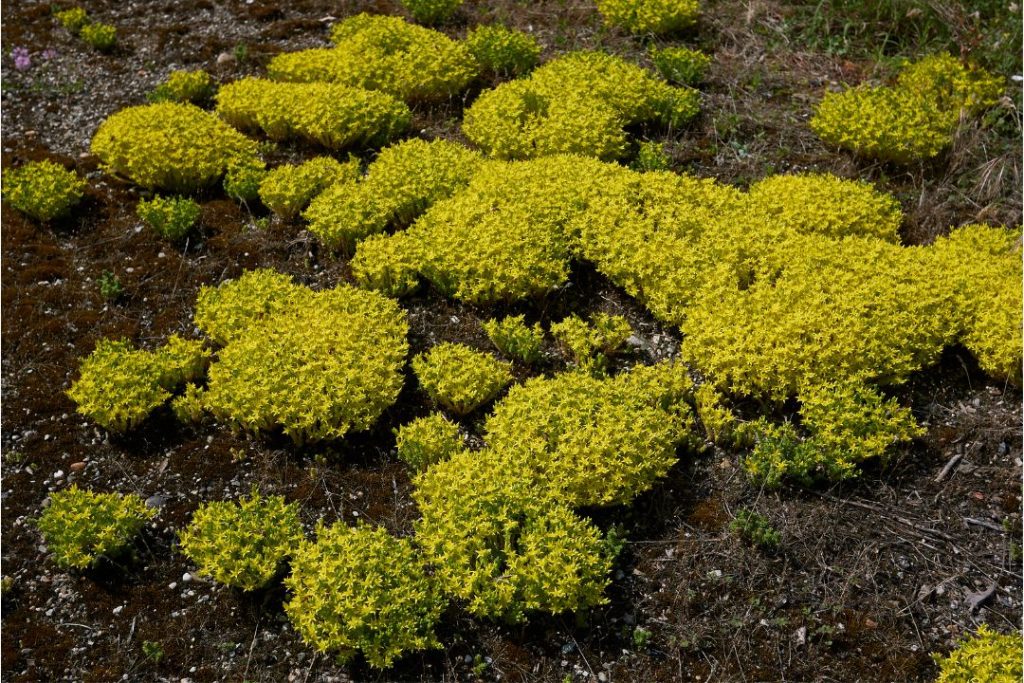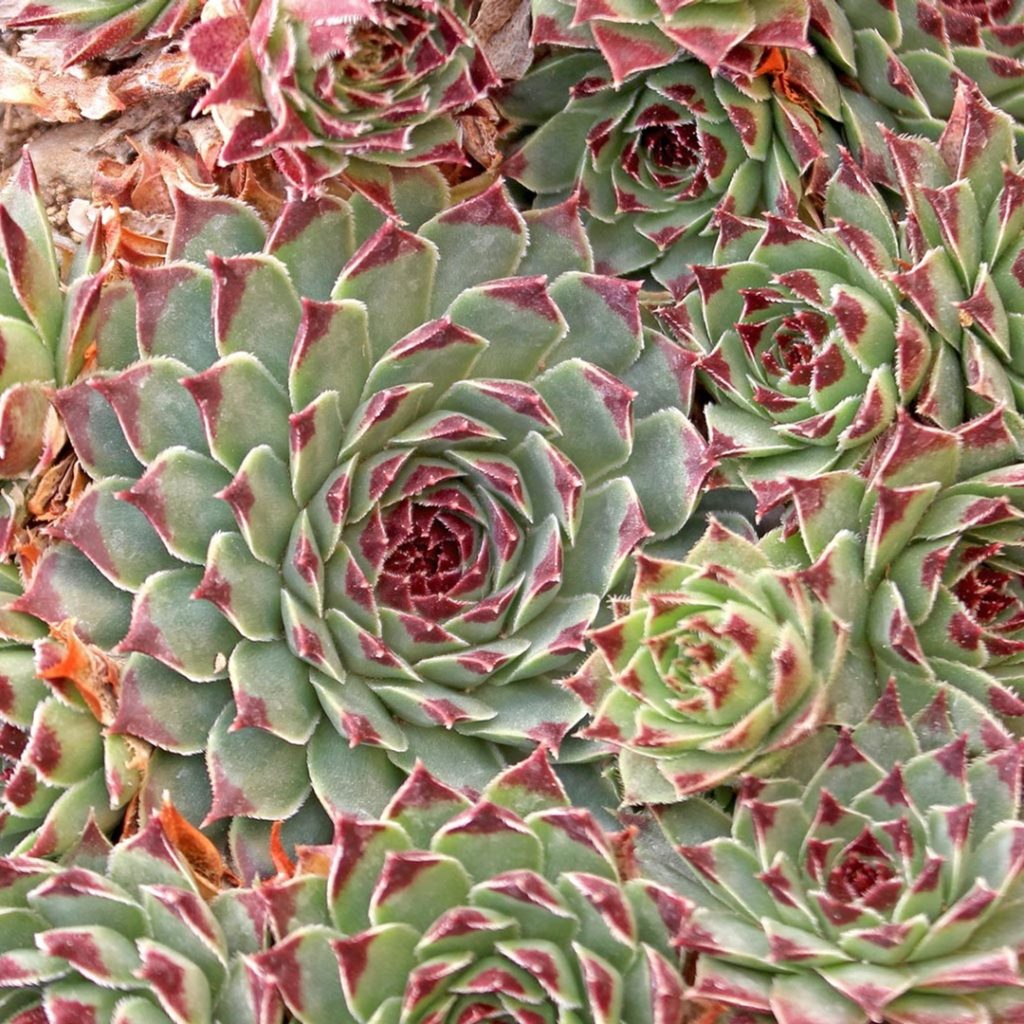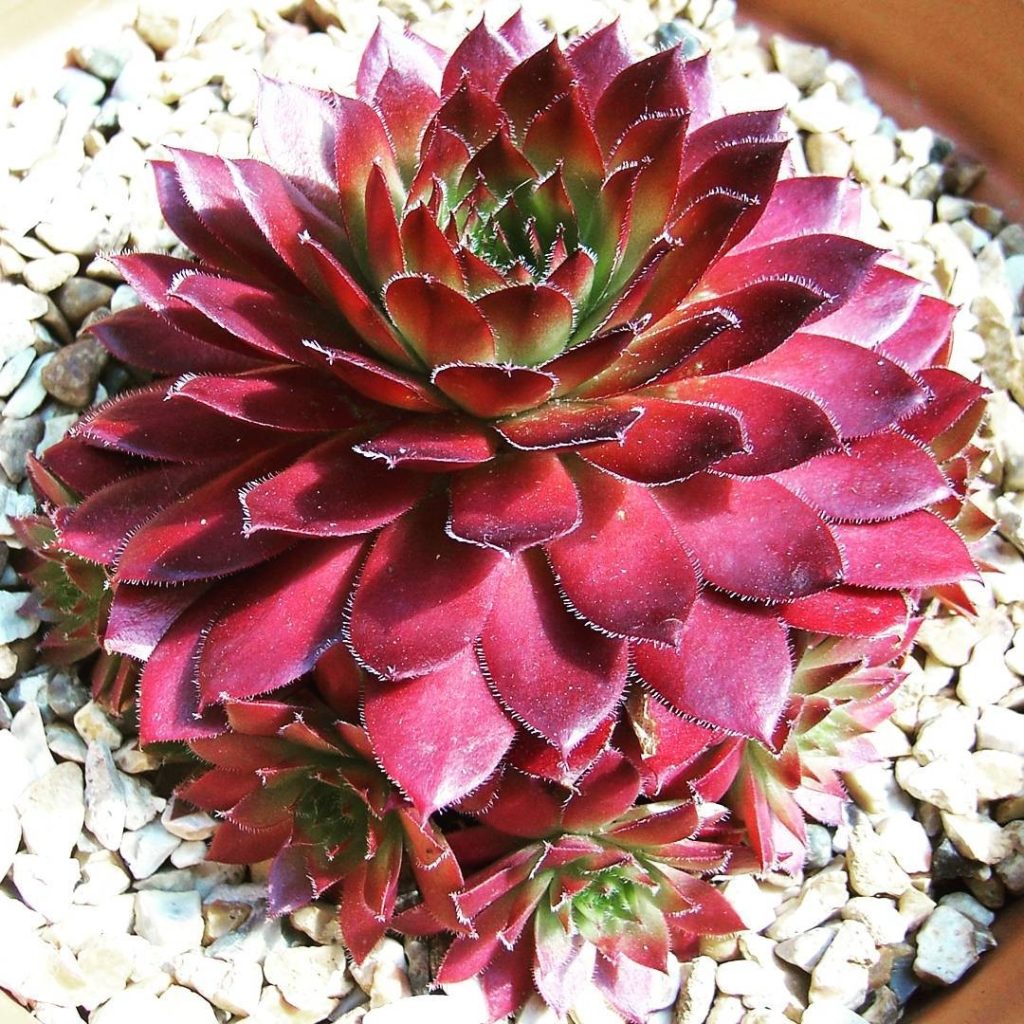30+ Cold Hardy Succulents for a Gorgeous Winter Garden
Succulents are like the classic stars of a Mediterranean garden. These plants are super easy to take care of and don’t have high demands. They come in all sorts of cool shapes and have flowers that are just enchanting. The coolest thing about succulents is that they can store water in their leaves, stems, or roots. This means they can survive for a long time without water, which is pretty amazing.
Even though succulents are tough, they still need protection from too much winter wetness. But guess what? There are some succulents that are winter-hardy! That means you can keep them in your garden all year round. So, here’s a list of cold hardy succulents that you can plant in your garden and enjoy their beauty no matter the season.

Contents
List of Cold Hardy Succulents
Check out this winter succulents list featuring a variety of cold hardy plants that can thrive in your garden even during the coldest months.
Agaves
Agaves are super cool plants that stand out in Mediterranean gardens. They have bold leaves with strong thorns and take a long time to bloom. When they do, their tall inflorescences are truly spectacular. Agaves are unique because they only produce one flower.
- Agave havardiana: This one looks similar to Agave neomexicana but has broader, larger, bluish-green leaves with thorny margins and tips. The rosette can grow up to 2 feet in diameter. The inflorescence is panicle-like and can reach a whopping height of 8-13 feet. The flowers are light green to yellow.

- Agave inaequidens: This is a small type of agave that can withstand temperatures as low as -13 degrees Fahrenheit. It forms large and compact rosettes with a diameter of up to 3 feet. The leaves are broad and bluish, with thorny margins and tips. The flowers are yellow-red.

- Agave neomexicana: This is probably the hardiest of all agaves. It has medium-sized rosettes with blue-green leaves that almost look black. The rosette can grow up to 2.5 feet in diameter. The leaves have a grayish-blue color and sharp thorns. This agave flowers only after several years and dies after blooming. It can tolerate frost down to -20 degrees Fahrenheit.

- Agave ovatifolia: This agave forms large and dense rosettes with a diameter of up to 4 feet. The leaves are broad, elliptical to oval, and have a gray to light blue color. The leaf margins are finely and irregularly serrated, and there are dark gray to black spines at the tips. The inflorescences are straight to slightly curved, green-yellow, and can reach a height of up to 13 feet. This agave can tolerate frosts down to -4 degrees Fahrenheit and can even cope with humid climates.

- Agave parryi: This is a slow-growing variety that can grow individually or form larger, compact groups. It has a spherical habit with a diameter of up to 2.5 feet. The leaves are green to gray, smooth, stiff, and curve upwards. The leaf margins have red-brown fibrous edges that are finely serrated at the base. The inflorescences are yellow to orange and can grow up to an impressive height of 16.5 feet. It can withstand temperatures as low as 9 degrees Fahrenheit.

- Agave parryi var. truncata: This variety is the most distinctive type of ‘Agave parryi’. It has a compact growth habit and forms a bowl-shaped rosette with a diameter of 1 foot. The leaves are short, broad, bluish to silvery-gray, and have dark red to black teeth on the margins and tip. It can tolerate frost down to 14 degrees Fahrenheit.

- Agave utahensis: This is a small and slow-growing agave with thick fleshy leaves that have a light green color. The leaves have brownish thorns on the margins and tip, which are particularly long at the top. The inflorescence is either paniculate or racemose, ranging between 5 and 11 feet in height. The cup-like flowers are yellow and about 1 inch long. It can tolerate winter temperatures down to -4 degrees Fahrenheit.

- Agave victoriae-reginae: Considered one of the most beautiful agaves, it forms dense rosettes of numerous leaves. The leaves are lush green with artistic white markings. Each leaf has a pointed-end thorn. This agave mostly flowers after decades, with cream-colored inflorescences that can reach a height of up to 13 feet. It is winter hardy down to 23 degrees Fahrenheit.

Aloes
Aloes are really tough succulents that can handle cold climates with temperatures as low as 19 degrees Fahrenheit.
- Aloe aristata: They grow up to 4 to 5 inches tall and form numerous offshoots. Over time, they create dense clumps of several rosettes. Their leaves are arranged in stemless and curly rosettes. You’ll notice small white spots on the top and bottom of the leaves, and instead of typical thorns, they have tiny white and soft teeth on the leaf margins.

Pro Tip:
These succulent plants can tolerate temporary freezing temperatures if the soil is very dry. If needed, it’s best to plant them in containers so you can protect them accordingly.
Cacti
From the cactus family, there are some stem succulents that can tolerate frost. However, if your winters tend to be wet and humid, even hardy cacti need some protection. The main thing to watch out for is rain protection.
- Escobaria sneedii hybrid: This is a multi-sprouted and branched succulent plant. It has small spherical to cylindrical cushions that can grow up to 3 inches high. The stems reach a height of up to 3 inches and are densely covered with thorns. The diameter of the plant is between 0.5 and 1 inch. The thorns are white, often brown at the tip, with long upright central spines and upright radial spines. It blooms from April to May with small brownish-pink flowers and bears small fruits in October/November. It has very good frost resistance.

Pro Tip:
From April to October, this plant appreciates some low-nitrogen cactus fertilizer.
- Old Man of the Andes (Oreocereus celsianus): This dark green columnar cactus can reach heights of up to 5 feet and is covered in white fur. It has long yellowish thorns in between. The pink flowers grow sideways and appear in summer. Spherical fruits appear at the end of summer. It has very good frost hardiness.

- Prickly pear (Opuntia ficus-indica): This cactus has flattened leaves that are actually water-storing shoots to survive drought. It has regularly branched shoots with fine, standing, bristle-like thorns. It flowers in summer, with lemon-yellow or pink-red flowers. The flowers only bloom on the annual shoot. In autumn, it produces edible fruits known as prickly pears. It has very good winter hardiness.

- Cane cholla (Cylindropuntia imbricata): This cactus can grow up to 10 feet tall and has a tree-like growth habit. Its branches point upwards and diagonally apart, and the end links are strongly humped. The thorns are brown and up to 1.2 inches long. It blooms in summer with dark pink to magenta-colored flowers. It is hardy succulent down to -22 degrees Fahrenheit.

- Ball cactus (Escobaria vivipara): This small cactus grows up to a maximum of 4 inches tall. It has flat-spherical, white, and short thorns. It usually doesn’t produce offshoots. The flowers are mostly pink and require cold weather for flower formation. It is best planted in the garden and can tolerate a little more moisture than most species. It needs a location protected from rain in winter.

Pro Tip:
Due to its small size, make sure to choose a spot in the garden where it won’t be overshadowed by other plants.
- Tulip prickly pear (Opuntia phaeacantha): This type forms medium-sized, disc-shaped shoots that can be green or purple in color. It has a moderate height of 8-12 inches and numerous dark thorns. It blooms from the second or third year with dark fuchsia flowers in summer. It produces dark purple fruits in autumn. It has winter hardiness down to -13 degrees Fahrenheit.

Midday flowers (Aizoaceae)
The ice plant is a succulent plant with magnificent ray flowers. The most common colors are orange to red, and less often, white flowers. In order to withstand the winter in the garden, they should also be protected from too much winter moisture.
- Cooper’s Hardy Ice Plant (Delosperma cooperi): This plant forms creeping cushions that can reach up to 6 inches in height. The leaves are dull green, thick, and oblong. It blooms from June/July to October with cup-like pink ray flowers. It has similar care requirements to Sedum and Sempervivum. It appreciates shade during cold frosts but has good winter hardiness.

- Hardy Yellow Ice Plant (Delosperma nubigenum): This ground cover plant thrives in sunny locations but doesn’t do well in shade. It forms dense carpets and grows up to 4 inches tall. The leaves are thick, lanceolate, and medium green. It blooms from May to June with yellow, cup-like flowers. It has frost hardiness down to -4 degrees Fahrenheit.

- Delosperma ‘Jewel of Desert’: This pretty ground cover plant is perfect for greening areas. It has dull green, slightly rubbery leaves that are many-branched. It starts flowering from spring until the first frost. It grows up to 6 inches tall and has a frost hardiness of -15 degrees in protected locations.

- White Nugget ice plant (Delosperma basuticum): This plant forms dense, flat cushions that are about 4 inches high. The leaves are evergreen, oblong, and medium green. It blooms between April and July with white, radial or cup-like flowers, creating a mat-like appearance. It can withstand temperatures down to -15 degrees Fahrenheit, but in very cold climates, winter protection is recommended.

Sedum (stonecrop)
Hardy species of stonecrop are often smaller in size. Their flowers are star-shaped and usually have five points. The flower colors can range from white to yellow and pink to chimney red.
- Sedum cyaneum ‘Sachalin’: This variety is extremely decorative and richly flowering. It has compact and flat growth, reaching heights of up to 4 inches. The leaves are round to oval and thick-fleshed, with a bright blue-gray color tinged with pink. It blooms from July to September with small umbel-shaped purple-red flowers. It can withstand temperatures of -17 degrees Fahrenheit.

- Sedum kamtschaticum var. floriferum ‘Weihenstephaner Gold’: This is a widely used and well-known variety. It creates a spreading carpet and reaches heights of up to 8 inches. The leaves are evergreen and tongue-shaped, with shoots turning brownish-red in winter. It blooms from July to August with small, umbel-shaped, star-shaped deep yellow flowers. It is very adaptable and can tolerate damp soil for a short time. It has a hardiness of -10 degrees Fahrenheit.

- Sedum acre: This is a very vigorous stonecrop that quickly forms dense carpets. It grows up to 4 inches tall with a creeping and flat growth habit. The foliage is green and yellow, looking most intense in full sun and nutrient-poor soil. It doesn’t like shade. It flowers from June to July with small, intense yellow, star-shaped flowers that are very numerous. It has very good frost hardiness.

Pro Tip:
Due to its small size, Sedum acre is ideal for small bowls. Make sure to choose a location in the garden that won’t be overshadowed or overgrown by other plants.
- Sedum spurium: This stonecrop is a colorful and lush ground cover plant. It can reach heights of up to 8 inches and spread 8-12 inches wide. The leaves are evergreen, oval, and notched, with a dark red color and greenish center. It blooms from July to August with small umbel-shaped, bright crimson red flowers. It has a good frost resistance.

Pro Tip:
It’s recommended to divide this stonecrop every two to three years and remove weak shoots and roots to improve growth and flowering vigor.
- Sedum spurium ‘Tricolor’: This variety of stonecrop impresses with its striking leaf color. The leaves are small and have a greenish-white-purple color. It has a spreading to broadly spreading growth habit and reaches heights of up to 4 inches. It blooms from July to September with pink, star-shaped flowers. It is tolerates frost down to -8 degrees Fahrenheit.

- White stonecrop ‘Chloroticum’: This plant forms low cushions that lie close to the ground all year round. They resemble small pearls. The growth height is up to 6 inches, and the leaves are small, rounded, and light green. The flowers appear from June to August, and they are arranged in umbels, with white, radial or cup-like flowers creating a mat-like appearance. It can withstand temperatures down to -10 degrees Fahrenheit.

Sempervivum (houseleek)
These outdoor succulents are incredibly hardy. They can tolerate extreme heat and severe frost. Houseleeks prefer full sun and sheltered locations, but too much winter moisture can cause problems.
- Common houseleek (Sempervivum tectorum): This plant forms dense cushions made up of rosettes that are 2-3 inches in size. The rosettes have very short stems, and the leaves are arranged in a rosette-like fashion. The rosettes can be open or closed, and the colors range from green and golden yellow to reddish, purple, bluish, or brownish. It blooms from June to August with pink flowers. The flower shoots can grow from 8 to 24 inches long, and the petals are pointed, with colors varying from white to pink or purple.

- Rolling Hens and Chicks (Sempervivum globiferum): This type of houseleek has leaf rosettes with a diameter of 0.2-3 inches. The rosettes are round and greenish to pale yellow. The leaf ends can be reddish or reddish-brown, and in autumn/winter, the leaves can have a bronze-red color. It blooms in July/August with greenish-yellow stone flowers. After flowering, the respective rosette dies.

Pro Tip:
White-flowered houseleeks, in particular, can bloom excessively and die after blooming from the rosettes and offshoots.
- Sempervivum calcareum ‘Mrs. Giuseppi’: This is an undemanding variety with medium-sized leaf rosettes. It can reach heights between 1.2-6 inches, and the rosettes are spherical with a gray-green color. The leaf tips are intensely red, and the leaves are evergreen and dull. It blooms from June to July/August with cymes in delicate pink and a yellow eye. It has a winter hardiness of -4 to -13 degrees Fahrenheit.

- Sempervivum ‘Blaukraut’: This houseleek has an unusually colored appearance. It has large, even, dark purple rosettes in the center that turn slightly bluish as summer approaches. The color is very similar to red cabbage. It has a winter hardiness of -4 to -13 degrees Fahrenheit.

- Sempervivum ‘Leopold’: This is a new hybrid with rosettes that can reach up to 6 inches in size. The leaves are remarkably broad and finely serrated. They are dark purple all year round, making a striking statement. It blooms from June to July with delicate pink flowers. It has a very good winter hardiness.

Pro Tip:
The Leopold variety is ideal for cactus gardens, planting in gravel beds, and as a hardy container plant.
- Sempervivum ‘Rubin’: This is one of the earliest known Sempervivum hybrids. It has beautiful and evenly shaped rosettes that are ruby red all year round. It can reach a height of about 6 inches. It blooms from June to July with delicate pink flowers. It has frost hardiness down to -28 degrees Fahrenheit.

- Sempervivum ‘Tesoro’: This variety is a strong and vigorous houseleek that forms large cushions. It can grow up to 8 inches in height and has a diameter of 4 inches. It blooms from June to July with rosettes that have a greenish-yellow color and a strong pink center. The leaf color varies depending on the season and light intensity, displaying a nice range of colors from spring to autumn. It has a winter hardiness of -4 to -13 degrees Fahrenheit.

Pro Tip:
The Tesoro variety is perfect for cactus gardens, gravel beds, and as a hardy container plant.
With this wide variety of cold hardy succulents, you can create a beautiful and vibrant garden that can withstand frost and cold temperatures. Just remember to provide them with the right care and protection during the winter months. Happy gardening!
